- Home
- Orhan Pamuk
The Black Book Page 30
The Black Book Read online
Page 30
According to Jelal, as commentators had related it thousands of times by placing the fact in the crowning spot in their books, it was true that Rumi had produced an effect on and was in turn affected by the itinerant dervish, Shams of Tabriz, the moment he saw him. But it didn’t happen because Rumi had intuited that this man was a sage, as it is commonly surmised, following the famous “dialogue” between them occasioned by the question posed by Shams of Tabriz. The conversation between them was based on an ordinary “parable on modesty,” variations of which can be read even in the most insipid Sufi books sold in mosque courtyards. If Rumi were the enlightened person that he was supposed to be, he wouldn’t have been influenced by such a commonplace parable; at most, he must’ve pretended he was impressed.
And that was what he did exactly; he behaved as if he had encountered in Shams a profound person, a potent soul. According to Jelal, what Rumi, then in his mid-thirties, really needed on that rainy day was to come across a “soul mate” such as this, someone in whose face he could see the reflection of his own face. Therefore, the moment he saw Shams, he’d convinced himself that this was the person he was seeking, and, naturally, it hadn’t been too hard for him to convince this Shams that the truly elevated personality was Shams himself. Following the meeting on October 23, 1244, they had closeted themselves in a cell at the seminary from which they did not emerge for the next six months. As to the question of what had gone on in the seminary cell for six months, the “secular” question on which members of the Mevlevi order that he founded touch only lightly, Jelal had tinkered with it, taking care not to irritate his readers overmuch, and had gone on to his real topic.
All his life, Rumi had sought the “other” who could move and enflame him, the mirror that could reflect his countenance and his soul. Consequently, what they said and did in the cell, like all of Rumi’s work, was to be understood as the deeds, words, and voices of many persons masquerading as one person, or else, of one person who’d taken on the personality of many. In order to endure the suffocating atmosphere of a thirteenth-century Anatolian town and the devotion of his blockheaded disciples (whom he just couldn’t give up), the poet needed to keep around other identities, just like the tools of disguise the poet always hid in his closet, which he might assume at appropriate times for a little respite. Jelal had reinforced the idea of this profound desire with images he had borrowed from another one of his pieces: “Just the way the ruler of some dumb country, who cannot stand ruling among the sycophants, the cruel, and the poor, might keep peasant’s clothes in his closet to wear out in the streets where he finds comfort.”
A month after the publication of this piece which, just as Galip might expect, was received with death threats and insults from his most pious readers, and letters of adulation from the hardheaded secular republicans, Jelal had returned to this topic which his boss had requested he keep his hands off of.
In the new piece, Jelal first surveyed some basic facts known to all Mevlevis: the other disciples, who were jealous of Rumi’s intimacy with some fly-by-night dervish, had put pressure on Shams and threatened him with death. Following this, on the snowy winter day of February 15, 1246 (Galip cherished Jelal’s obsession with chronologic precision, like that in those school history books full of chronological mistakes), Shams disappeared from Konya. Rumi, who could not bear the absence of his beloved, of his other self, having learned from a letter that Shams was in Damascus summoned back his “love” (Jelal had put the word in quotation marks in order not to arouse his readers’ suspicions even more) and had him marry one of his foster daughters. Yet, soon after, the circle of jealousy would begin to tighten around Shams once more, and he would be ambushed and “knifed to death on the fifth day of the month of December in 1247, on a Thursday,” by a mob that included Rumi’s son, Aladdin; and that very night, under a cold and nasty rain, his body would be dumped into a well on the property next to Rumi’s house.
Galip came across some material that didn’t seem at all unfamiliar in the next lines describing the well where Shams’s corpse was disposed of. What Jelal had written about the well, the corpse in it, the corpse’s loneliness and sorrow, not only managed to freak Galip out, but hit him with the feeling that he had personally seen with his own eyes the seven-hundred-year-old well with the corpse, recognized the stone wall itself and the Khorasan-style plaster work. After reading the piece a couple times more, and scanning through other articles that he picked up instinctively, he discovered that not only had Jelal lifted some sentences word for word from a column describing the apartment building air shaft as the dark void, he had also managed to keep the style in the two articles consistent.
Later, making too much of a small trick to which he would not have paid any attention had he seen it after being engrossed in what Jelal had written on Hurufism, Galip began reading through the material he had piled on the desk with this new perspective. That was when he understood why reading Jelal’s pieces had changed the things around him, why the goodwill and that profound sense of peace, which related the tables, the worn-out curtains and all-too-familiar ashtrays, the chairs, the scissors on the radiator, and the rest of the paraphernalia to each other, had absconded.
Jelal spoke about Rumi as if he were speaking of himself; taking advantage of a magic transposition in the lines and the words, which was not immediately obvious, he put himself in Rumi’s place. Galip became certain about the transposition when he noticed that Jelal employed the same sentences, paragraphs, and even the same sorrowful voice both in the pieces where Jelal spoke about himself and in the “historical” pieces where he spoke about Rumi. What made this grotesque game frightening was the fact that he supported it with stuff that he’d penned in his private journals, his unpublished rough drafts, his historical chats, the essays he’d written on another Mevlevi poet (Şeyh Galip, the author of Beauty and Love), his dream interpretations, his Istanbul memoirs, and in a great many of his columns.
In his “Believe It or Not” column Jelal had related hundreds of times the stories of kings who thought they were someone else, Chinese emperors who torched their palaces so that they could assume the identity of someone else, and sultans who made going among their subjects in disguise into an obsession, staying away for days on end from affairs of state and the palace. In a journal where Jelal wrote accounts that were something like reminiscences, Galip read that on a plain old summer’s day Jelal had thought he was, in order of appearance, Leibniz, the celebrated plutocrat Cevdet Bey, Muhammad, a newspaper mogul, Anatole France, a triumphant chef, an imam famous for his sermons, Robinson Crusoe, Balzac, and six other personages whose names had been crossed out in embarrassment. He glanced at the caricatures inspired by Rumi’s likeness on commemorative postage stamps and posters, and he came across a clumsily drawn picture of a casket with the inscription of “Jelal Rumi” on it. Conversely, one of the unpublished columns began with this sentence: “Rumi’s Mathnawi, which is considered his greatest work, is nothing but plagiarism from beginning to end.”
According to Jelal, like all those people who cannot endure being themselves for long and find solace only in assuming another person’s identity, Rumi too, in narrating a story, could only tell what someone else had already told. Besides, for such unhappy souls, storytelling was a trick devised to escape from their own tedious bodies and spirits. The Mathnawi was an odd and messy “composition” just like the Thousand and One Nights, where a second story begins when the first has not yet ended, a third is taken up before the second is done—endless stories, always left behind. Poking through the volumes of the Mathnawi, Galip saw that lines had been drawn on the margin to mark stories that were pornographic in nature, and that some pages had been subjected to angry green question marks, exclamation marks, and to being downright crossed out. After hurriedly reading through the stories told on the pages that were rife with dirt and ink, Galip realized that many a column he had supposed was original when he read it in his teenage years was in fact a story Jelal had lifte
d from the Mathnawi and adapted to our present-day Istanbul.
He remembered evenings when Jelal carried on for hours about the courtly art of nazire, poems modeled after other poems, divulging that it was his only skill. While Rüya scarfed up the pastries they got on the way, Jelal would say that he wrote many of his columns, perhaps all, with the help of others; he claimed that he took all his columns from other sources, adding that the crucial thing was not “creating” something new but taking something astonishingly wonderful that had been worked on by thousands of intellects over thousands of years, elegantly changing it here and there, and transforming it into something new. What unnerved Galip, making him lose his optimistic faith in the ordinary reality of the things in the room and the papers on the desk, was not learning that the stories he had taken to be Jelal’s all these years had actually come from somewhere else, but that this fact pointed to other probabilities.
It occurred to him that, aside from this room in this flat which was a replica of itself as it was twenty-five years ago, there could be another room in a flat that replicated this place in another part of Istanbul. If there did not exist a Jelal sitting at an identical desk telling a story and a Rüya listening to him happily, then there was an unfortunate look-alike of Galip’s sitting at an identical desk who assumed that reading an assortment of old columns might enable him to find the trail of his lost wife. It also occurred to him that just as objects, pictures, symbols on plastic bags, were signs of things other than themselves, and just as Jelal’s columns signified something different with each reading, his life too might have a different meaning each time he considered it, and that he might get lost between these interpretations that followed each other inexorably like wagons in a train. It was dark outside, and the room had filled with the sort of murky light that was palpable, reminiscent of the smell of mold and death in a dismal cellar covered with spiders. In an effort to free himself of the netherworld nightmare into which he had been plunged unwillingly and get out of this ghostly realm, Galip turned on the desk lamp, realizing he had no other recourse than to make his tired eyes go on reading.
That’s how he returned to the place he’d left off, the spider-filled well where Shams’s body had been plunged. In the rest of the story, the poet was beside himself sorrowing over the loss of his “friend,” his “love.” He could not make himself believe that Shams had been murdered and thrown down a well; what’s more, he was furious with those who wanted to show him the well which was right under his nose, inventing pretexts to look for his “beloved” in other places: couldn’t Shams have gone to Damascus as he had done before, the last time he was lost?
That’s how Rumi had gone to Damascus and begun searching for his beloved in the streets. He looked for him in the streets, on street corners, in rooms and taverns, leaving no stone unturned; he looked up his lover’s old friends, acquaintances they had in common, his favorite places where he’d hung out, in mosques and seminaries, so much so that, after a while, seeking became more important than finding. At this point in the column, the reader found himself immersed in clouds of opium, bats, and attar of roses that belong to a mystical and pantheistic realm where the seeker and the sought change places, where it is not finding that is essential but keeping on the path, not the beloved but Love, for which the beloved is a pretext. The various adventures that befell the poet in the streets, equivalent to the stages that a traveler on the Sufi path must overcome in order to reach enlightenment, had been briefly outlined: Following the scene of confusion upon realizing that the lover has vanished, if embarking on his trail is the appropriate stage of “Denial, or Subversion of Natural Order,” then meetings with the beloved’s former friends and enemies, investigating the places frequented by the beloved as well as going through his heartrending belongings were equivalent to the various stages of ascetic “ordeals.” If the scene in the whorehouse stood for “Dissolving into Love,” then pseudonyms such as those in the ciphered letters found in al-Hallaj Mansur’s house after his death, literary devices, and texts adorned with word games stood for being lost in heaven and hell or, as it was also pointed out by Attar, being lost in the valley of mystery. As the storytellers in a tavern each narrating a “love story” in the middle of the night came straight out of Attar’s Conference of the Birds, so did the poet’s wanderings around the streets, shops, and windows rife with mystery which “intoxicate” him into realizing that he is seeking himself on Mount Kaf—and this was an example of “Absolute State of Union with God,” or Nothingness, also lifted from the same book.
Jelal’s column had been embellished with snazzy lines which were versified in the classical mode, concerning the identification of the seeker with the sought from other Sufi writers, and the well-known verse spoken by Rumi, exhausted from his month-long search in Damascus, which was tacked on in prose by Jelal who hated verse translations: “If I am He,” said the poet one day, dissolved in the city’s mystery, “then why am I still searching?” Jelal concluded the climactic point with the literary fact that the Mevlevis reiterate with pride. During this stage of the game, Rumi did not sign his own name to the poems he had done such a bang-up job writing but collected them under the name of Shams of Tabriz.
The aspect that interested Galip in this column, just as it had when he first read it in his youth, was its investigative character and the police work involved in the investigation. Here Jelal came to a conclusion which would once more irritate his “religious” readers, whom he’d appeased for a time by writing of Sufi matters, but gratify his “secular” audience: “The person who wanted Shams murdered and thrown down the well was, of course, Rumi himself.” Jelal had made this allegation subscribing to a method often employed by the Turkish police and the prosecutor whom he had come to know closely during the early fifties when he reported from the Beyoğlu district court. In the overly confident manner of a small-town prosecutor accustomed to making accusations, Jelal suggested that the person who most benefited from his lover’s death was Rumi himself since it gave him a chance to get out of being a humdrum teacher of theology and attain the rank of a Sufi poet, and claimed that, therefore, it was Rumi who had the motivation to get the murder committed. As to the thin line of law between motivation and execution, which is characteristic only of Christian novels, he hurried over it, mentioning odd behaviors—such as obvious guilt feelings, denial that the person is dead which is a ruse common to amateur murderers, going stark raving mad, and refusal to look down the well—and embarked on another topic that plunged Galip thoroughly into deep despair: After the murder was committed, what did the defendant’s search in the streets of Damascus signify, the way he combed the city over and over, month after month?
Galip reasoned that Jelal had spent more time on the column than it appeared, based on some notes Jelal had made in his journal and the map of Damascus in the box where he kept ticket stubs from old soccer games (Turkey 3–Hungary 1) and old movies (Scarlet Street, Going Home). On the map, the course of Rumi’s investigations in Damascus had been traced with a green ballpoint pen.
Long after it got dark, Galip found a map of Cairo and a 1934 City Directory of the Istanbul Municipality in a box where Jelal kept the odds and ends which he’d got hold of during the same time period when he had published a column devoted to the detective stories in the Thousand and One Nights (“Mercury Ali,” “The Clever Thief,” etc.). Just as he expected, a green ballpoint had marked arrows on the Cairo map, working in the Thousand and One Nights stories. He saw that the maps in the City Directory had also been marked with arrows, if not with the same pen then in the same green ink. Tracking down the adventures of the green arrows on the confusing maps in the Istanbul directory, he had an impression that he was seeing the map of his own passage throughout the city these past few days. In order to convince himself that he was seeing things, he reminded himself the green arrow had stopped at commercial buildings where he had never set foot, mosques he’d never entered, and steep streets he’d never climbed, but he had in
fact stopped off at adjacent commercial buildings, mosques that were nearby, and streets that went up the same hills: Which was to say that all Istanbul, no matter how it was marked on the map, was teeming with folks who were on the same trip!
So, he put the maps of Damascus, Cairo, and Istanbul side by side in the way Jelal had anticipated years ago in a column inspired by Edgar Allan Poe. To do this, he had to cut the bound pages of the City Directory with a razor blade he found in the bathroom on which was the hairy evidence that it had run across Jelal’s beard. When he first put the maps together, he couldn’t quite figure out what to do with the pieces of lines and signs that weren’t the same size. Then he pressed the maps over each other on the glass in the living-room door, just the way he and Rüya had done when they were children to trace a picture out of a magazine, and studied them against the light of the lamp on the other side of the door. The only thing that he could barely make out in the maps spread out on top of one other was the coincidental wrinkle-laden face of a terribly old person.
He stared at the face for such a long time that he began to think he had long been well acquainted with it. The feeling of familiarity and the quietness of the night gave Galip a sense of peace, a feeling of serenity that in turn inspired a sense of self-confidence, self-confidence of long standing that had been carefully prepared for—and that was preordained for someone else. Galip sincerely thought that Jelal was guiding him. Jelal had written extensively about faces, but all that came to Galip’s mind was some of his sentences concerning the inner peace Jelal felt looking at the faces of some female foreign movie stars. That’s how come he decided to take a look at the box of film criticism Jelal had written as a young man.

 Snow
Snow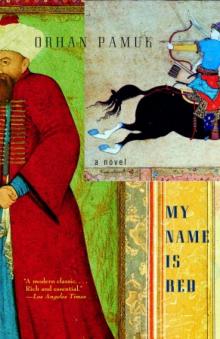 My Name is Red
My Name is Red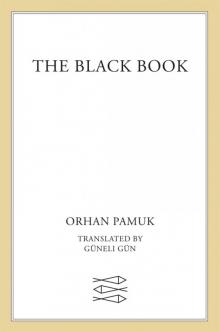 The Black Book
The Black Book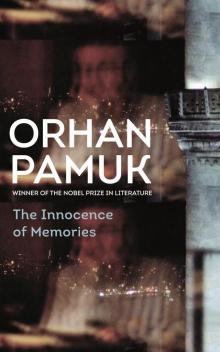 The Innocence of Memories
The Innocence of Memories The White Castle
The White Castle Other Colors
Other Colors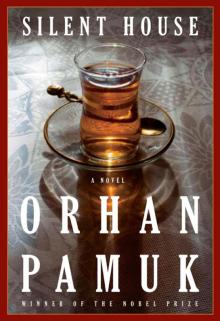 Silent House
Silent House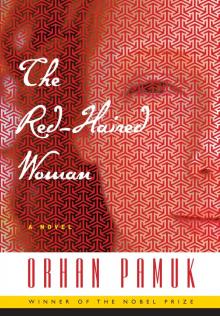 The Red-Haired Woman
The Red-Haired Woman The Museum of Innocence
The Museum of Innocence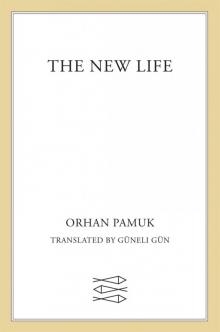 The New Life
The New Life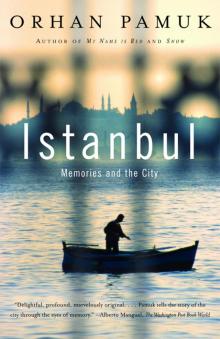 Istanbul
Istanbul